Andhra Pradesh, a state in the southern region of India, boasts of diverse flora and fauna, with a rich biodiversity that attracts birdwatchers from all over the world.
The state houses a vast variety of bird species, both residents and migratory, many of which are unique to the region. From the lush green forests of the Eastern Ghats to the wetlands and coastal regions, Andhra Pradesh provides an ideal ecological niche for a diverse range of avian species.
This article aims to highlight some of the most fascinating and distinctive bird species indigenous to Andhra Pradesh, providing insights into their habitats, behaviors, and conservation status.
So, let’s delve into the wonderful world of Andhra Pradesh birds and explore their magnificent attributes.
1. Bustard
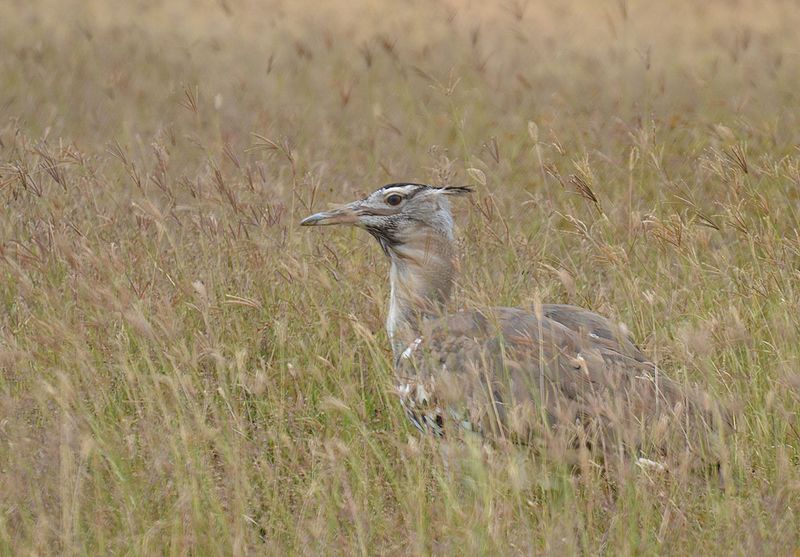
Bustards are large, terrestrial birds that inhabit dry grassland areas and the steppes of the Old World. They range from 40-150 cm in length and belong to the family Otididae.
Bustards have an omnivorous diet consisting of leaves, buds, seeds, fruit as well as small vertebrates and invertebrates.
These birds usually live a solitary life but can be seen gathering around water sources or food during certain times of year such as mating season.
Due to their large size they are vulnerable to predation by foxes or other animals which is why they tend to remain alert at all times.
When in open spaces while relying on camouflage for protection against predators when out in tall vegetation coverings.
Scientific classification:
| Kingdom | Animalia |
| Phylum | Chordata |
| Class | Aves |
| Clade | Otidimorphae |
| Order | Otidiformes Wagler, 1830 |
| Family | Otididae Rafinesque, 1815 |
Also Featured In: Common Birds in India, Turkey Birds You Should Know
2. Indian Roller
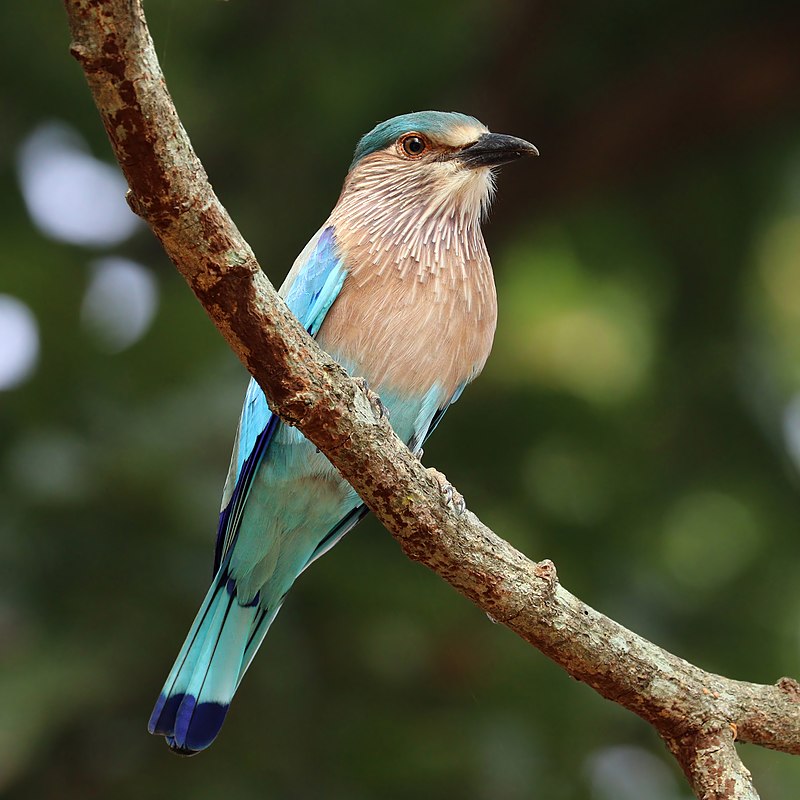
The Indian roller is a beautiful bird of the Coraciidae family. It has an average length of 12-13 inches and weighs 5.9 to 6.2 ounces with a wingspan of 26-29 inches.
Its face and throat are pinkish, while its head and back are brown with blue on its rump, light blue markings on one side of the wing, dark blue markings on other side making it easily distinguishable in flight.
Both male and female have same colouration but males tend to be slightly larger than females though they can only be differentiated when seen together closely due to similar colouring pattern between sexes.
The Indian Roller makes spectacular aerial dives from great heights during courtship display which attracts many viewers each year.
Scientific classification:
| Kingdom | Animalia |
| Phylum | Chordata |
| Class | Aves |
| Order | Coraciiformes |
| Family | Coraciidae |
| Genus | Coracias |
| Species | C. benghalensis |
Also Featured In: Birds That Live in the Jungle, Birds of Karnataka
3. Painted Stork
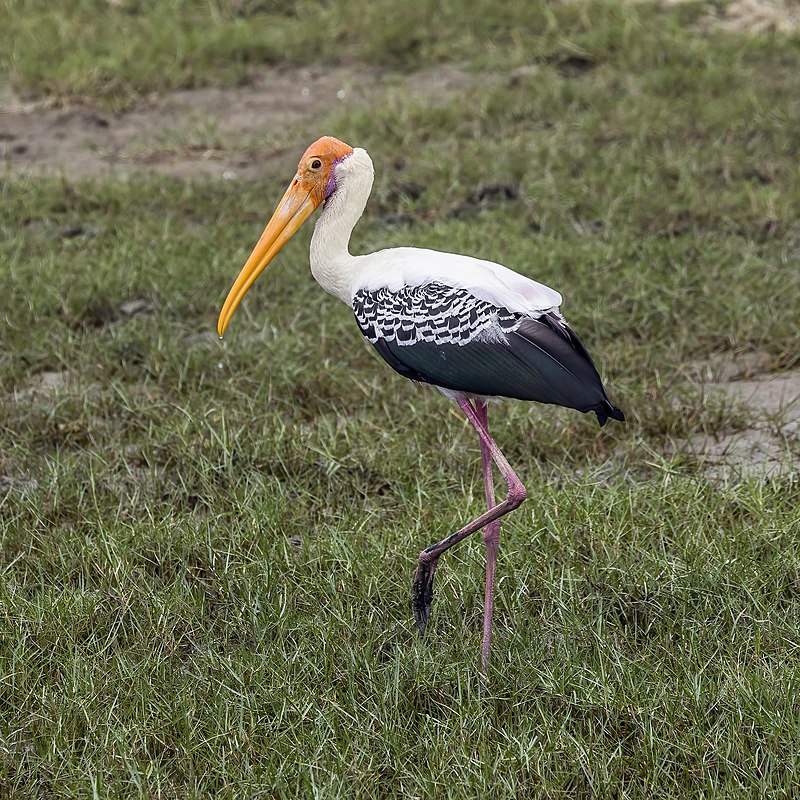
The Painted Stork is a large bird that belongs to the stork family. It has an impressive wingspan and can be found in tropical Asia, ranging from the Indian subcontinent all the way to Southeast Asia.
These birds are unique because of their pink tertial feathers, which gives them their name. They form flocks when they forage in shallow waters near rivers or lakes.
They dip their half-open beaks into water looking for food such as fish, frogs and other small aquatic creatures.
A distinctive feature of these birds is that during breeding season both males and females have red eyes with yellow rings around them.
This species also displays amazing cooperative behaviour when nesting; young storks help build nests by bringing material back to older ones who weave it together forming huge colonies on trees close to wetlands.
Scientific classification:
| Kingdom | Animalia |
| Phylum | Chordata |
| Class | Aves |
| Order | Ciconiiformes |
| Family | Ciconiidae |
| Genus | Mycteria |
| Species | M. leucocephala |
Also Featured In: Gujarati Birds, Big Birds that Live in Singapore
4. Yellow-Wattled Lapwing
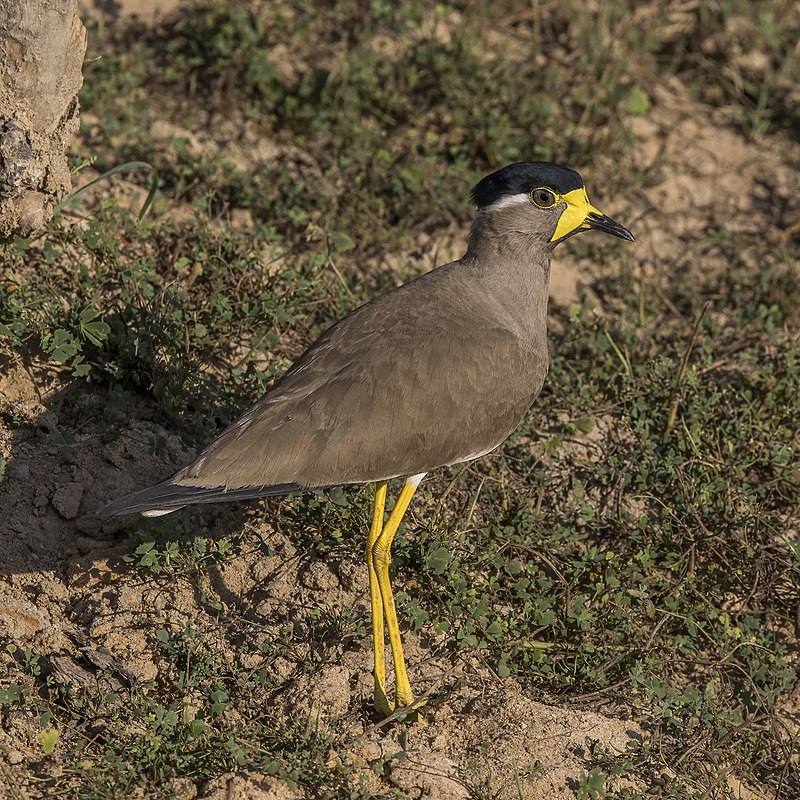
The Yellow-wattled Lapwing is a stunning bird native to the Indian Subcontinent. It has an unmistakable appearance, with its grey brown body and black cap contrasting sharply against its bright yellow legs and triangular wattle at the base of its neck.
Not only does this make it easily identifiable, but also makes it quite attractive in appearance.
The bird is capable of fast flight and has a sharp call which can be heard over long distances on dry plains across peninsular India.
Although they don’t migrate, they do make seasonal movements depending on rainfall patterns in their locale making them adaptive birds too.
Scientific classification:
| Kingdom | Animalia |
| Phylum | Chordata |
| Class | Aves |
| Order | Charadriiformes |
| Family | Charadriidae |
| Genus | Vanellus |
| Species | V. malabaricus |
5. Green-Billed Malkoha
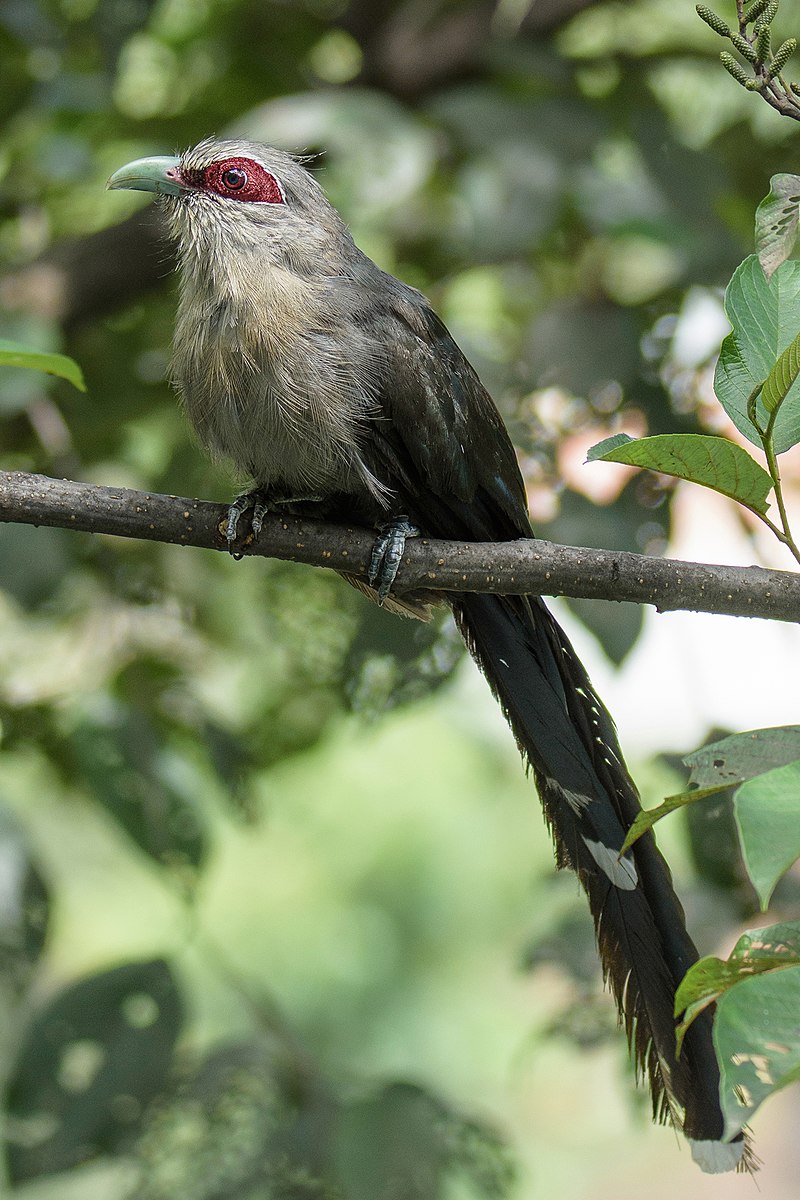
The Green-billed Malkoha is a striking bird found across the Indian Subcontinent and Southeast Asia. It measures 50 to 60 cm in length, with a waxy bluish black body and long graduated tail featuring white tips on its feathers.
The most remarkable feature of this species is its prominently curved green bill, which gives it name. These birds are usually seen in dry scrub or thin forest habitats.
They feed mainly on insects such as grasshoppers, caterpillars and beetles that they hunt by perching before swooping down to capture their prey.
In addition to hunting for food, these birds also nestle into trees during the day time when it gets too hot outside.
Weighing around 100 gmms, Green-Billed Malkohas make an interesting sight wherever they go due to their unique appearance.
Scientific classification:
| Kingdom | Animalia |
| Phylum | Chordata |
| Class | Aves |
| Order | Cuculiformes |
| Family | Cuculidae |
| Genus | Phaenicophaeus |
| Species | P. tristis |
Also Featured In: Birds That You’ll See in Kaziranga National Park, Common Birds of Ko Lanta
6. Blue-Faced Malkoha
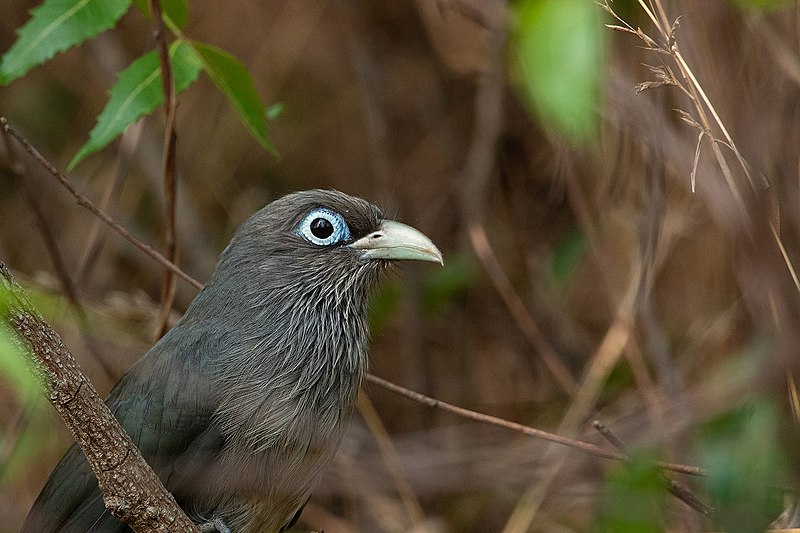
The Blue-faced Malkoha is a beautiful and unique bird which can be found in the scrub and deciduous forests of India and Sri Lanka.
It has an impressive waxy, dark blue-grey plumage on its upperparts with a long tail having graduated white-tipped feathers.
Its throat and chin are darker than other parts of its body but still have spiny pale feathers that branch out from it.
The lower belly usually displays a dusky hue while the wings are brownish grey at their base fading to light brown at tips.
This species also has distinctive green bill giving them their name ‘Small Green Billed’ malkohas’.
They mainly feed on insects or fruits depending upon availability making them omnivorous birds by nature.
Scientific classification:
| Kingdom | Animalia |
| Phylum | Chordata |
| Class | Aves |
| Order | Cuculiformes |
| Family | Cuculidae |
| Genus | Phaenicophaeus |
| Species | P. viridirostris |
7. Indian Golden Oriole
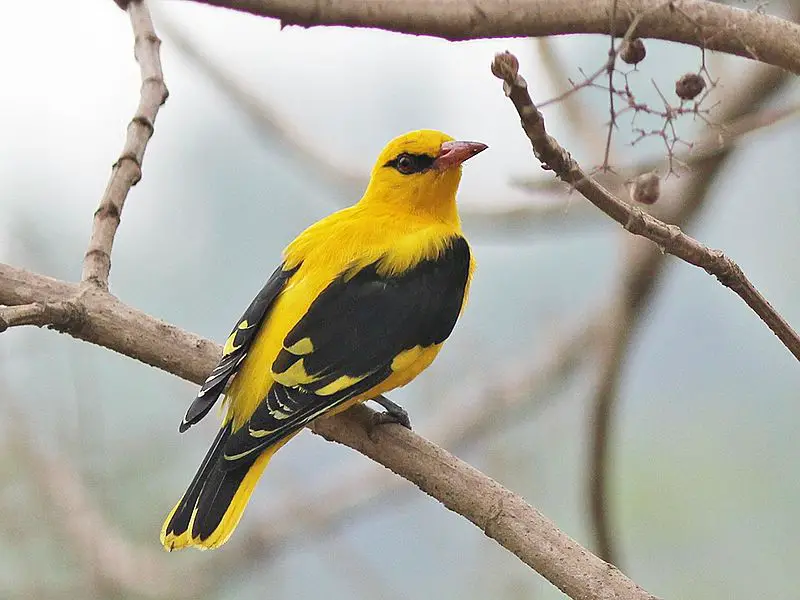
The Indian golden oriole is a species of oriole found in the Indian subcontinent and Central Asia.
It has been identified as a full distinct species from Eurasian golden Oriole by its black eye stripe which extends behind the eyes.
With its bright yellow body, black wings and tail with white patches, this bird stands out among other birds in its region.
The males are more brightly colored than females but both share similar features such as long pointed bills and strong legs for perching or hopping through trees.
They feed mainly on insects, fruits and nectar while their diet may also include small reptiles like lizards depending on availability of food sources around them.
This beautiful songbird can often be spotted during spring when they migrate to find suitable breeding grounds where they build nests high up in tree branches to lay eggs.
Scientific classification:
| Kingdom | Animalia |
| Phylum | Chordata |
| Class | Aves |
| Order | Passeriformes |
| Family | Oriolidae |
| Genus | Oriolus |
| Species | O. kundoo |
Also Featured In: Native Pakistani Birds, Most Common Birds of Bihar
8. Bay-Backed Shrike
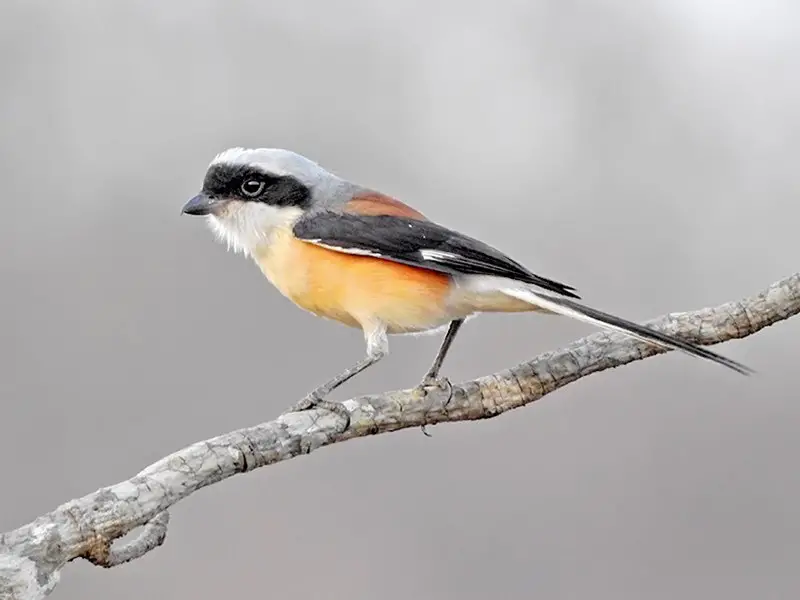
The Bay-backed Shrike is a small, but striking bird native to South Asia. It measures just 17 cm long and has maroon-brown upperparts with a pale rump and a long black tail edged in white.
The underparts are white, while the crown and nape of its neck are grey with a distinctive “bandit mask” of black through the eye area.
Additionally, it has an easily visible white wing patch that contrasts nicely against its otherwise dark plumage.
This species makes for an interesting sight as they search open woodlands or scrubland for their prey including insects, reptiles, amphibians and rodents which they impale on thorns or barbed wire fences like other shrikes.
Scientific classification:
| Kingdom | Animalia |
| Phylum | Chordata |
| Class | Aves |
| Order | Passeriformes |
| Family | Laniidae |
| Genus | Lanius |
| Species | L. vittatus |
9. Rufous Treepie
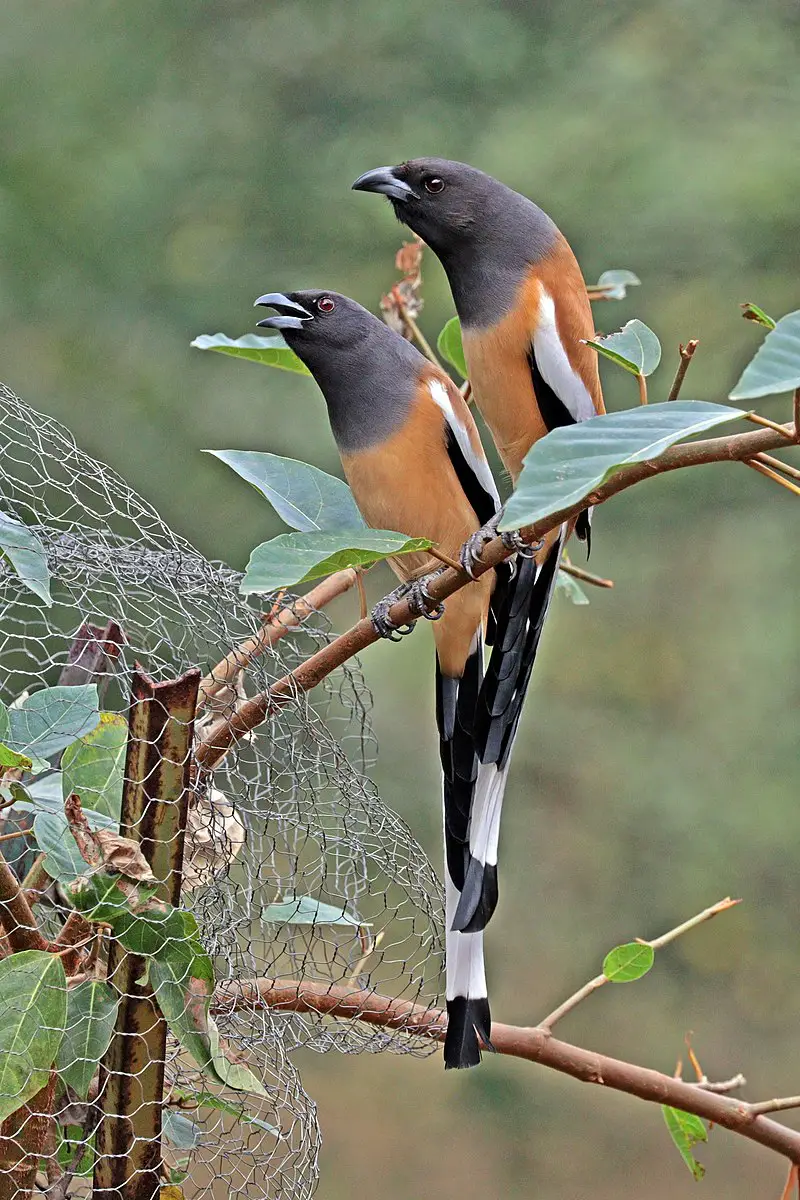
The Rufous Treepie is a member of the Corvidae family and native to the Indian Subcontinent, as well as parts of Southeast Asia. It has distinctive loud musical calls that make it easily recognizable.
This bird can be found in open scrub lands, agricultural areas, forests and even urban gardens due to its adaptability and omnivorous diet.
With its long tail feathers ranging from brown-black to greyish-brown on top with orange underneath; this species stands out among other birds.
They also have an interesting way of eating fruits: they peck at them while hovering midair. The Rufous Treepie is not only beautiful but also quite intelligent – their problem solving abilities are second only to those of primates.
Scientific classification:
| Kingdom | Animalia |
| Phylum | Chordata |
| Class | Aves |
| Order | Passeriformes |
| Family | Corvidae |
| Genus | Dendrocitta |
| Species | D. vagabunda |
Also Featured In: Common Birds in Kerala, Birds that Live in Uttar Pradesh
10. Cinnamon Bittern
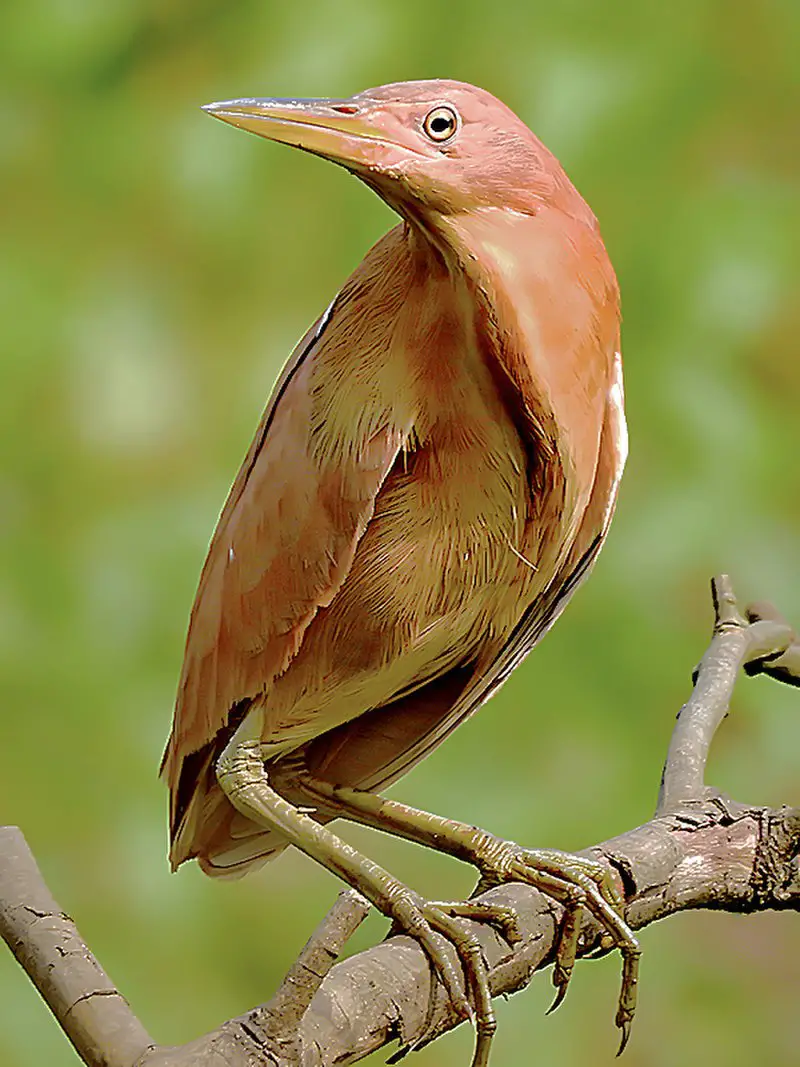
The Cinnamon Bittern is a small Old World bird, found in parts of India, China and Indonesia. It can be identified by its chestnut brown colour on the back and wings with white streaks throughout.
During breeding season it has yellowish-brown plumage on its head neck and breast. Its legs are black which helps distinguish it from other bitterns.
The cinnamon bittern mainly resides in tropical or subtropical climates but some northern birds migrate short distances during winter months for food sources.
They feed mostly on fish, insects, frogs and crustaceans while they breed between April to August making nests near shallow water areas under dense vegetation cover providing safety from predators like snakes or cats that may prey upon them otherwise.
Scientific classification:
| Kingdom | Animalia |
| Phylum | Chordata |
| Class | Aves |
| Order | Pelecaniformes |
| Family | Ardeidae |
| Genus | Ixobrychus |
| Species | I. cinnamomeus |
Also Featured In: Birds that Commonly Found in Bali,
11. Bee-Eater

Bee-eaters are one of the most beautiful and vibrant birds in existence. They have a slender body, long wings, down turned bills and their signature elongated central tail feathers which make them instantly recognizable from afar.
Their plumage is incredibly colorful with many shades ranging from blues to greens to reds that glisten when they fly through the air.
These stunning creatures can be found all over Africa, Asia, Southern Europe, Australia and New Guinea where they feed mainly on bees but also other insects like flies or wasps as well as small mammals such as lizards or rodents.
Bee-eaters live in colonies near rivers or wetlands so that they may easily hunt for food while staying close together for safety purposes.
Additionally it allows them to better display their impressive courtship dances during mating season.
Scientific classification:
| Kingdom | Animalia |
| Phylum | Chordata |
| Class | Aves |
| Order | Coraciiformes |
| Family | Meropidae Rafinesque, 1815 |
Also Featured In: Common Nigerian Birds, Common Algerian Birds
12. Spoonbills
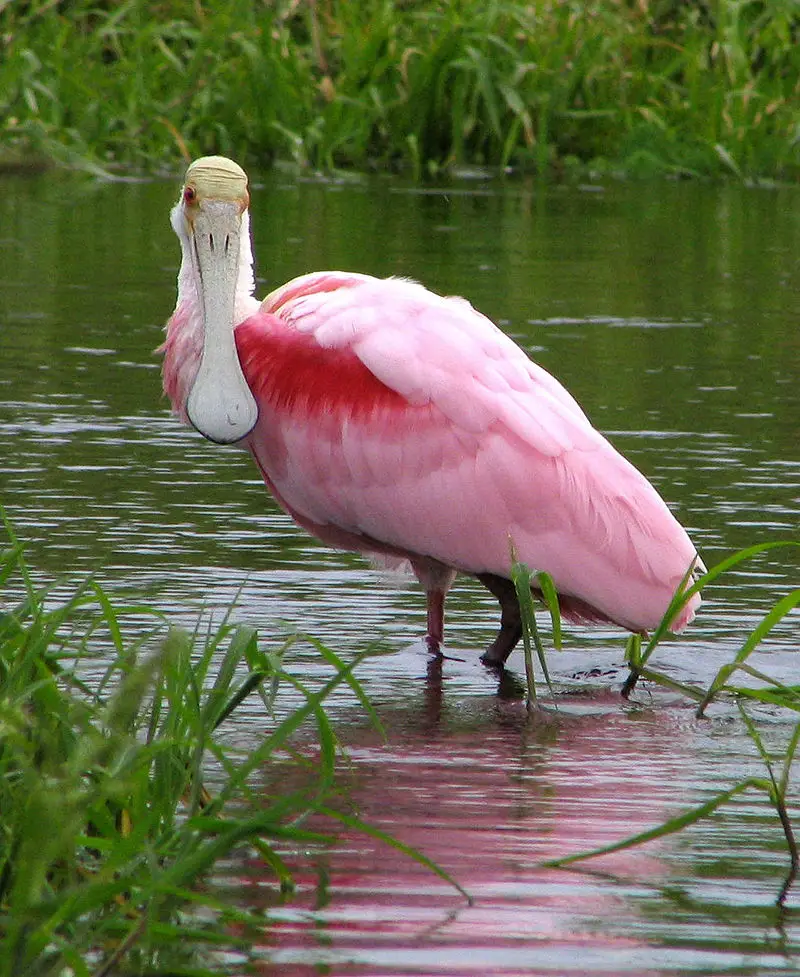
Spoonbills are large wading birds belonging to the genus Platalea. Characterized by their long legs and distinctive spoon-shaped beaks, these birds can be found all over the world except Antarctica.
The name of this genus derives from Ancient Greek meaning “broad”, referring to their bill’s shape.
There are six species of Spoonbill recognized – though they usually form a single group, sometimes it is divided into three genera.
These graceful creatures feed mainly on small aquatic organisms such as insects and fish which they catch with an open-mouth technique while sweeping through shallow waters in search for food.
They typically breed near water bodies during springtime when there’s plenty of food available around them.
Scientific classification:
| Kingdom | Animalia |
| Phylum | Chordata |
| Class | Aves |
| Order | Pelecaniformes |
| Family | Threskiornithidae |
| Subfamily | Plataleinae |
| Genus | Platalea Linnaeus, 1758 |
Also Featured In: Birds of South African, Birds Found in Hungary
13. Oriental Pratincole
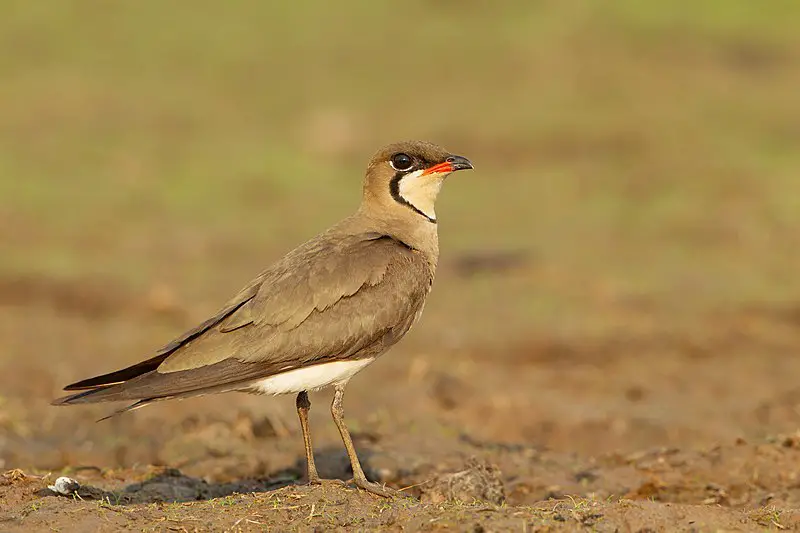
The Oriental Pratincole is a wader, belonging to the pratincole family Glareolidae. It has many names such as grasshopper-bird or swallow-plover, and its genus name comes from Latin glarea meaning ‘gravel’ due to their typical nesting habitats in gravel areas.
The species maldivarum refers to the type locality near Maldive Islands, where it was caught alive at sea.
This bird mainly feeds on terrestrial insects which gives it an advantage over other birds of prey that feed on marine animals only.
Its diet consists mostly of locusts as well as crickets and beetles among others; they hunt by either running fast or hovering above dry land before diving down for food items when spotted below them.
They have long wings combined with powerful flight muscles aid these birds during escape flights when pursued by predators like hawks or eagles since they are not very good fighters in aerial combat situations compared to other raptors.
Scientific classification:
| Kingdom | Animalia |
| Phylum | Chordata |
| Class | Aves |
| Order | Charadriiformes |
| Family | Glareolidae |
| Genus | Glareola |
| Species | G. maldivarum |
Also Featured In: Native South Korean Birds, Hong Kong Birds You Need to See
14. Coraciiformes
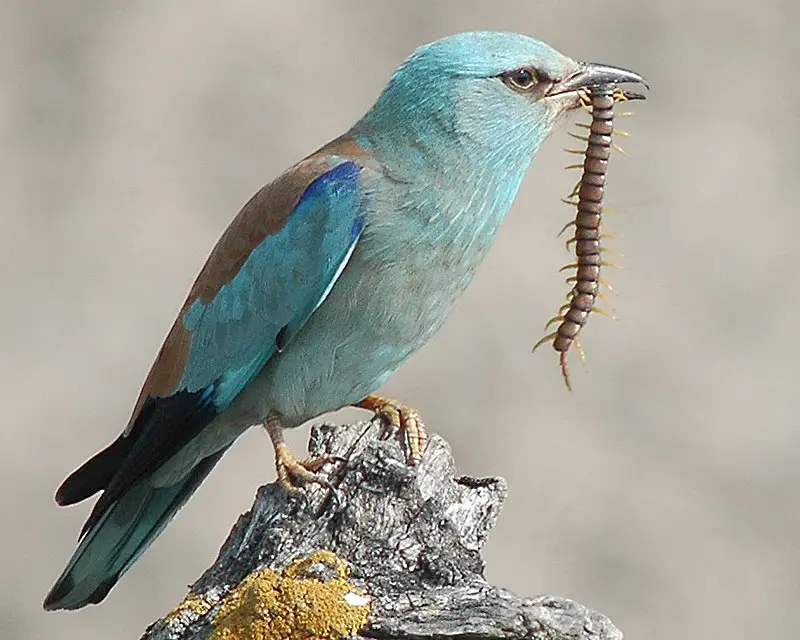
Coraciiformes birds are a group of beautiful and vibrant species, including kingfishers, bee-eaters, rollers, motmots and todies. They have syndactyly feet with three forward pointing toes (with their third and fourth fused at the base).
However in some kingfisher species one toe is absent. This order of bird has an interesting behavior known as ‘slamming’ which links them all together.
These amazing creatures can be seen across many parts of the world from forests to deserts.
Their colorful feathers make them stand out amongst other birds making sure they don’t go unnoticed.
Scientific classification:
| Kingdom | Animalia |
| Phylum | Chordata |
| Class | Aves |
| Clade | Picodynastornithes |
| Order | Coraciiformes Forbes, 1884 |
Also Featured In: Birds of Argentina, Bulgarian Birds
15. Spot-Billed Pelican
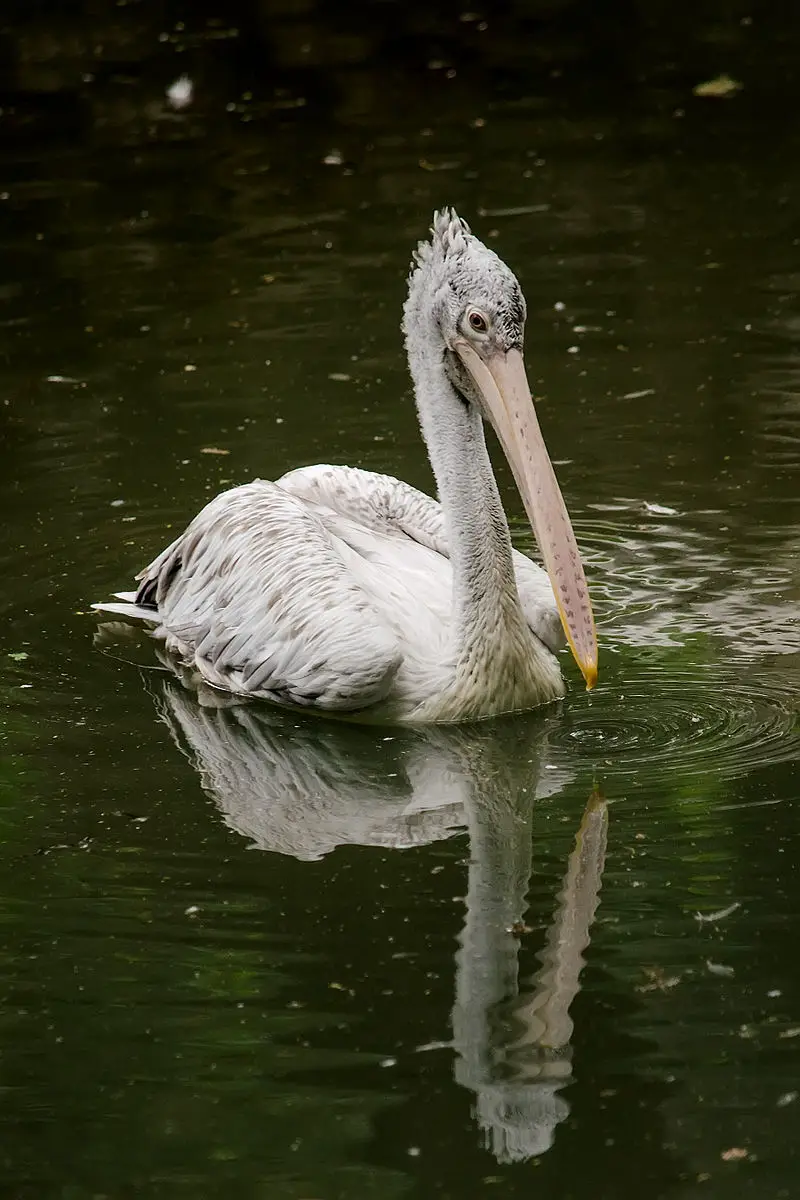
The Spot-billed Pelican is a species of the pelican family that lives in southern Asia, ranging from Iran to Indonesia. It prefers large inland and coastal waters like lakes.
These birds are quite small compared to other types of pelicans, making them difficult to identify from afar but their distinguishing feature is the spots on its bill which can be seen up close.
They feed mainly on fish by diving into water and scooping out prey with their long bills. During breeding season they build nests near bodies of water and lay two or three eggs per clutch.
The spot-billed pelican is an important part of local ecosystems as it helps keep populations of certain aquatic preys down while providing food for larger predators such as raptors and crocodiles.
Scientific classification:
| Kingdom | Animalia |
| Phylum | Chordata |
| Class | Aves |
| Order | Pelecaniformes |
| Family | Pelecanidae |
| Genus | Pelecanus |
| Species | P. philippensis |
Also Featured In: Birds of Cambodia, Birds that Migrate to Sri Lankan
16. Indian Cormorant
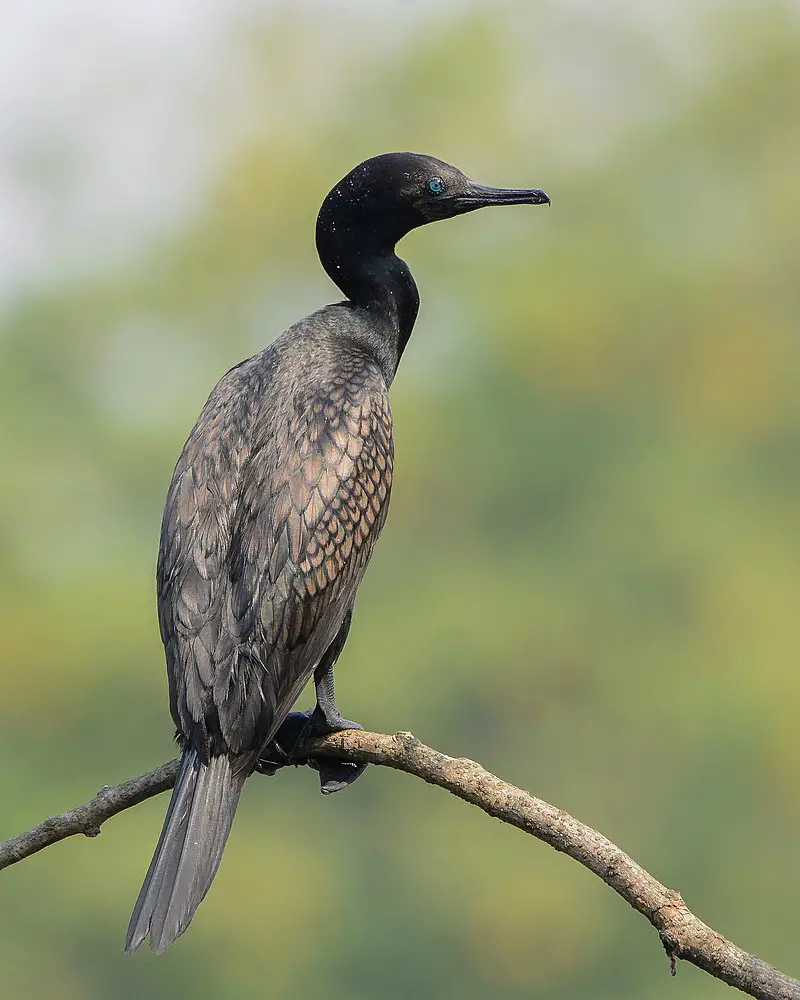
The Indian Cormorant is a beautiful bird found in the inland waters of India, stretching from Sind to Thailand and Cambodia.
It belongs to the cormorant family and has an unmistakable blue eye which sets it apart from other birds like its size-similar little cormorant.
The head is small with sloping forehead while there’s a long narrow neck connecting it to its body.
These birds are gregarious by nature, usually seen together in groups near water bodies or on land banks closeby.
They have powerful webbed feet for swimming as well as diving under water for their food – mainly fish along with some aquatic invertebrates and frogs too.
All these features make this species truly unique so keep your eyes peeled if you’re lucky enough spot them.
Scientific classification:
| Kingdom | Animalia |
| Phylum | Chordata |
| Class | Aves |
| Order | Suliformes |
| Family | Phalacrocoracidae |
| Genus | Phalacrocorax |
| Species | P. fuscicollis |
Also Featured In: Maldives birds,
17. Ashy Woodswallow
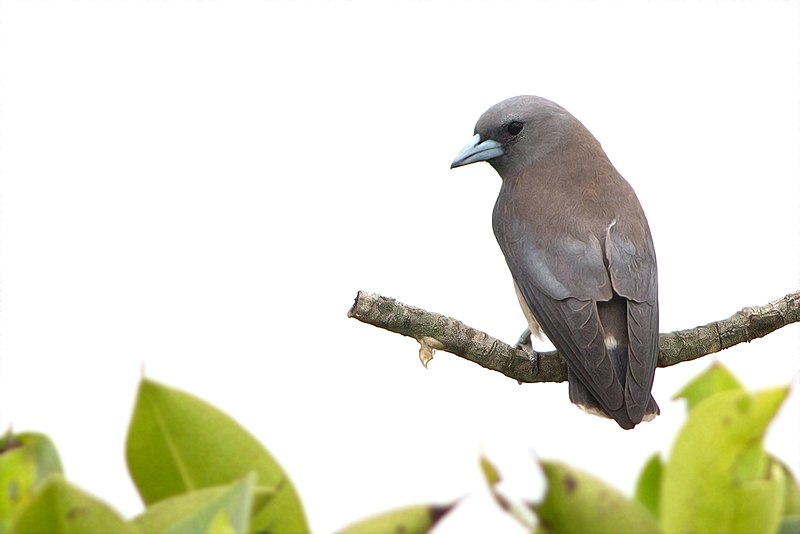
The Ashy Woodswallow is a small bird found in South Asia. It has a short, curved bill and long wings that make it appear stocky when perched.
This species of woodswallow typically spends time high on power lines or tall bare trees but can often be seen around palm tree-dominated areas too.
Their ashy gray coloration allows them to blend into the canopy making them difficult to spot at times.
They travel in groups and are very social birds who rely heavily on one another for protection from predators such as owls and falcons.
Despite their shyness, these fascinating little creatures are incredibly important pollinators of various plants across the region which makes protecting their habitats all the more essential.
Scientific classification:
| Kingdom | Animalia |
| Phylum | Chordata |
| Class | Aves |
| Order | Passeriformes |
| Family | Artamidae |
| Genus | Artamus |
| Species | A. fuscus |
Also Featured In: Birds of Khao Yai National Park,
18. Little Swift
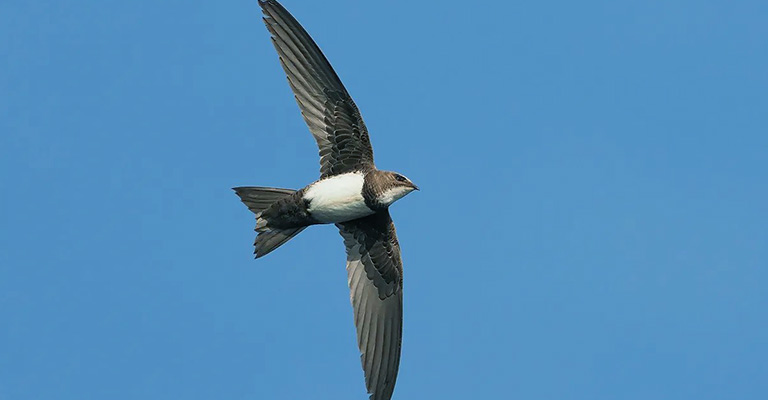
The Little Swift is a small species of swift found in Africa and southwestern Asia. It is also known to be a vagrant or local breeder in parts of southern Europe.
These birds prefer habitats such as urban areas, rocky cliffs and other sheltered locations where they build their nests using the same techniques that all members of the Apodiformes order use.
They are extremely fast flyers, hence why they were given their Latin name ‘Apus’, which means swift.
The ancient Greeks believed these birds had no feet due to how swiftly they flew. With its unique coloration – grey back with white underparts – this bird stands out from its relatives in the avian world.
Scientific classification:
| Kingdom | Animalia |
| Phylum | Chordata |
| Class | Aves |
| Order | Apodiformes |
| Family | Apodidae |
| Genus | Apus |
| Species | A. affinis |
Also Featured In: Swifts Species, Birds that Live in Rajasthan
19. Yellow-Crowned Woodpecker
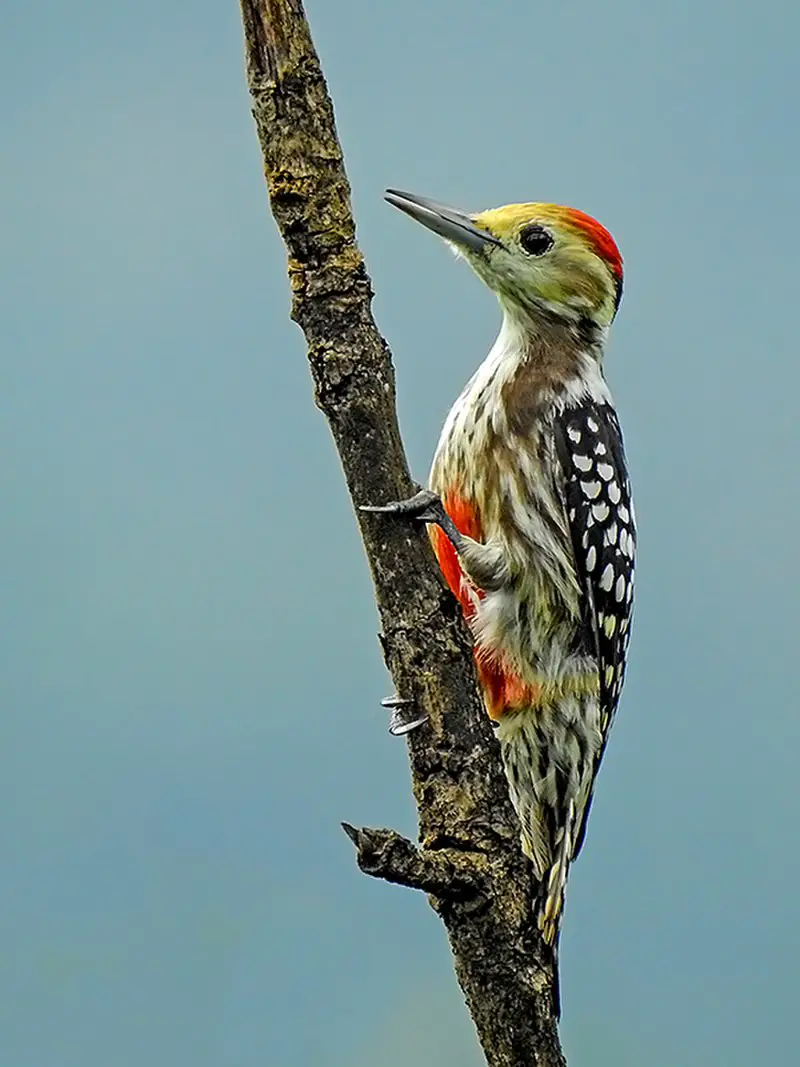
The Yellow-crowned woodpecker is a small, pied bird found in the Indian subcontinent. It was first described by English ornithologist John Latham in 1801 and is the only species within its genus Leiopicus.
This species has black upperparts with white stripes on its wings and yellow crowns along their heads and necks.
Its underparts are usually greyish or brownish with buffy streaks which help it to camouflage among tree branches as they feed mainly on insects like ants, beetles, bees etc that live inside trunks of trees.
They also eat fruits occasionally but mostly rely on insects for sustenance during breeding season when food availability increases significantly compared to other times of year due to insect activity increasing around this time period.
Scientific classification:
| Kingdom | Animalia |
| Phylum | Chordata |
| Class | Aves |
| Order | Piciformes |
| Family | Picidae |
| Genus | Leiopicus Bonaparte, 1854 |
| Species | L. mahrattensis |
Also Featured In: Woodpeckers Species, Common Birds of Chhattisgarh
20. Brown-Headed Barbet
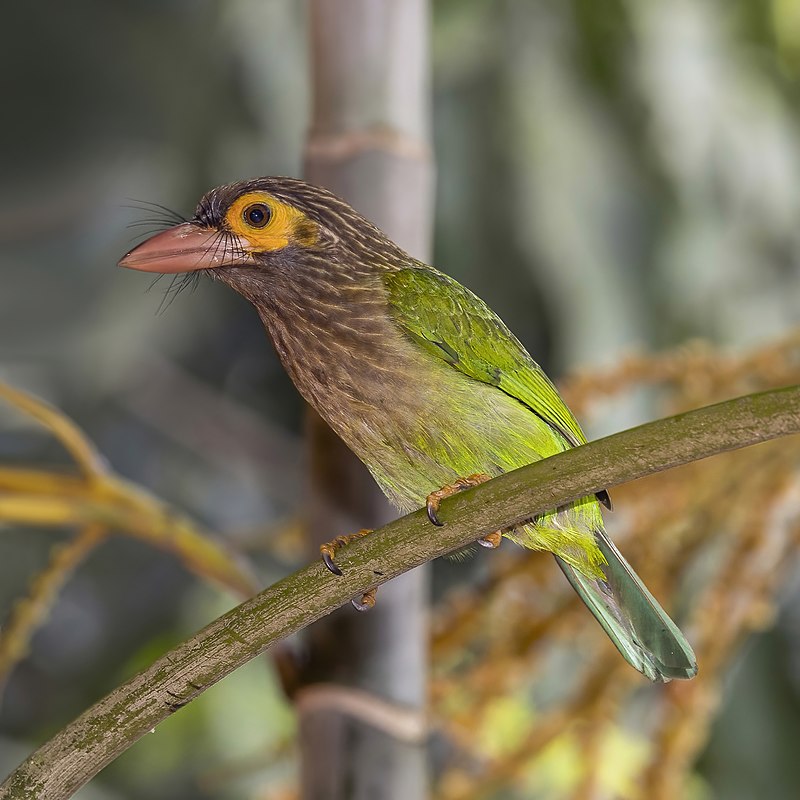
The Brown-headed barbet is an Asian bird that lives in the moist broadleaf forests of the Indian subcontinent. Johann Friedrich Gmelin described it in 1788 as part of the puffbird family.
The Brown-headed barbet has a distinct brown head and a green body. They are known for their distinctive calls, which can be heard echoing through the forests.
These birds feed on insects and fruits, using their strong beaks to break open nuts and seeds.
They are cavity nesters, making their homes in holes in trees. The Brown-headed barbet is considered a species of least concern, although its habitats are threatened by deforestation and human activities.
Their colorful appearance and unique calls make them a delight for birdwatchers to spot in the wild.
Scientific classification:
| Kingdom | Animalia |
| Phylum | Chordata |
| Class | Aves |
| Order | Piciformes |
| Family | Megalaimidae |
| Genus | Psilopogon |
| Species | P. zeylanicus |
Also Featured In: Birds of Goa, Common Birds that Live in Odisha
21. Megalaimidae
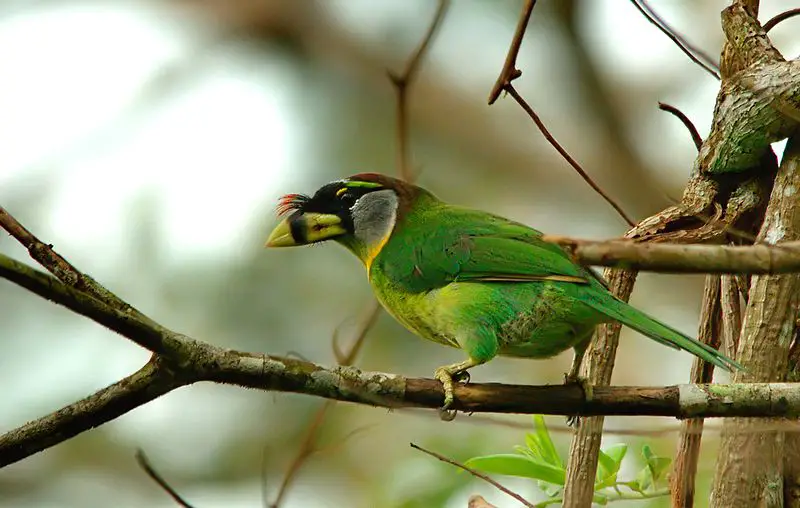
The Megalaimidae birds are a family of species found in the forests of the Indomalayan region. They belong to two genera and include 34 different types.
These birds were once classified as part of the Capitonidae family, but they have since been recognized as distinct. They are closely related to the Lybiidae and Ramphastidae bird families.
Megalaimidae birds have colorful plumage and are known for their distinctive barb-shaped feathers on their bills.
They are active during the day and primarily feed on fruits, insects, and occasionally small animals.
Some species of Megalaimidae birds, such as the brown-headed barbet, are popular among birdwatchers and can be seen in backyard gardens and parks.
Overall, the Megalaimidae bird family is important for maintaining the biodiversity of the forests they inhabit.
Scientific classification:
| Kingdom | Animalia |
| Phylum | Chordata |
| Class | Aves |
| Order | Piciformes |
| Infraorder | Ramphastides |
| Family | Megalaimidae Blyth, 1852 |
Also Featured In: Most Common Taiwan Birds, Birds that Live in Tamil Nadu
22. Indian Nightjar
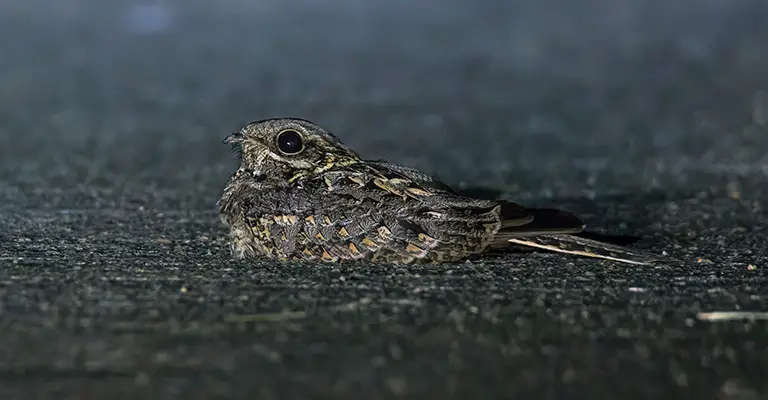
The Indian nightjar is a tiny bird that inhabits open areas in South and Southeast Asia. It is known for its nocturnal habits and distinct calls, which resemble the sound of a stone skipping on ice.
This bird is crepuscular, meaning that it is most active during dawn and dusk. Although it is not often seen, it can be identified by its unique clicking calls.
The Indian nightjar is a resident breeder, which means it stays in one area year-round and breeds there.
This bird chooses its habitat carefully, preferring open landscapes where it can easily find insects to feed on during the night.
Overall, the Indian nightjar is a fascinating and elusive bird that adds to the diversity of birdlife in Asia.
Scientific classification:
| Kingdom | Animalia |
| Phylum | Chordata |
| Class | Aves |
| Clade | Strisores |
| Order | Caprimulgiformes |
| Family | Caprimulgidae |
| Genus | Caprimulgus |
| Species | C. asiaticus |
Also Featured In: Common Birds of Maharashtra,
23. Common Woodshrike
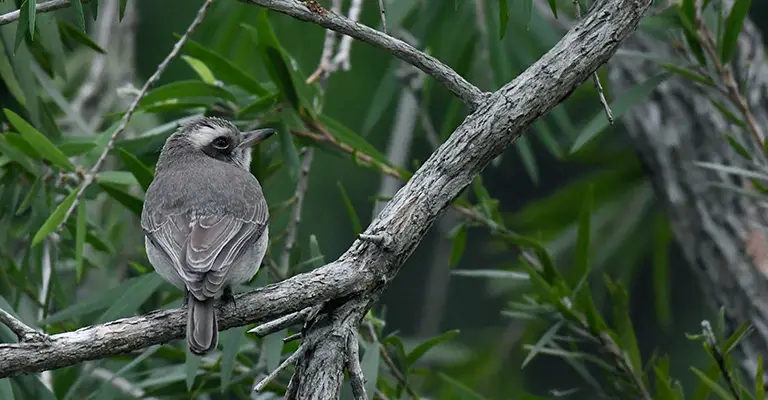
The Common woodshrike bird is a small, ashy brown species found across Asia. It has a distinctive dark cheek patch and broad white brow.
Normally found in thin forests and scrub habitats, they are known to hunt insects as their primary diet, occasionally joining other insectivorous birds.
Native to Sri Lanka, they were previously classified under the family Vangidae. Despite their small size, they have striking features that make them stand out.
The Common woodshrike bird is a unique and intriguing species that deserves our attention and appreciation.
Scientific classification:
| Kingdom | Animalia |
| Phylum | Chordata |
| Class | Aves |
| Order | Passeriformes |
| Family | Vangidae |
| Genus | Tephrodornis |
| Species | T. pondicerianus |
Also Featured In: Delhi Birds You Need to See, Endemic Sri Lanka Birds
24. Loten’s Sunbird
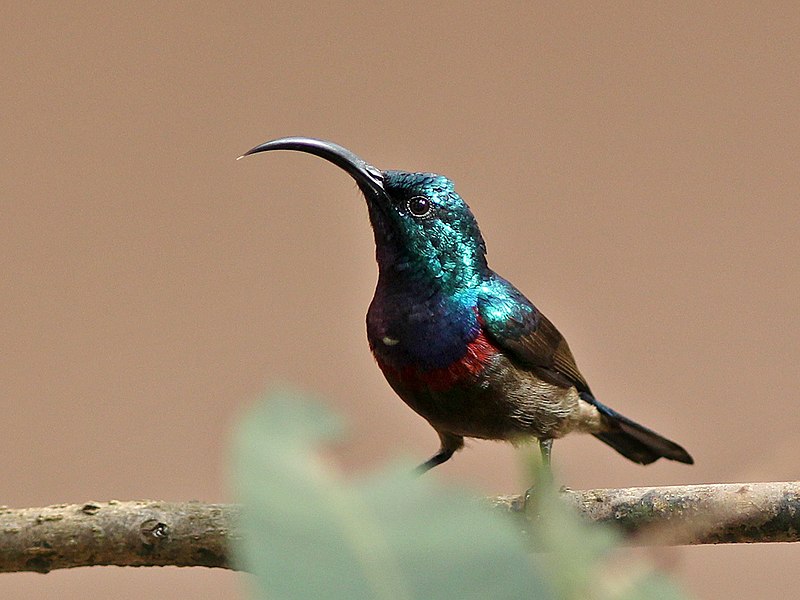
Loten’s sunbird, also known as the long-billed sunbird or maroon-breasted sunbird, is a species of sunbird found in India and Sri Lanka. It is closely related to the purple sunbird and both species hover around flowers for nectar.
However, Loten’s sunbird can be distinguished by its longer bill. It is named after Joan Gideon Loten, the Dutch governor of colonial Ceylon.
This bird is endemic to the region and is known for its vibrant colors, including a maroon breast and iridescent green feathers.
The Loten’s sunbird is an important pollinator in its ecosystem, helping to spread pollen from flower to flower as it feeds on nectar.
Its presence is a testament to the unique biodiversity of the region, and efforts are being made to conserve this beautiful bird species.
Scientific classification:
| Kingdom | Animalia |
| Phylum | Chordata |
| Class | Aves |
| Order | Passeriformes |
| Family | Nectariniidae |
| Genus | Cinnyris |
| Species | C. lotenius |
Also Featured In: Common Birds in Bangalore, Pet Birds that Live in India
25. Jerdon’s Nightjar
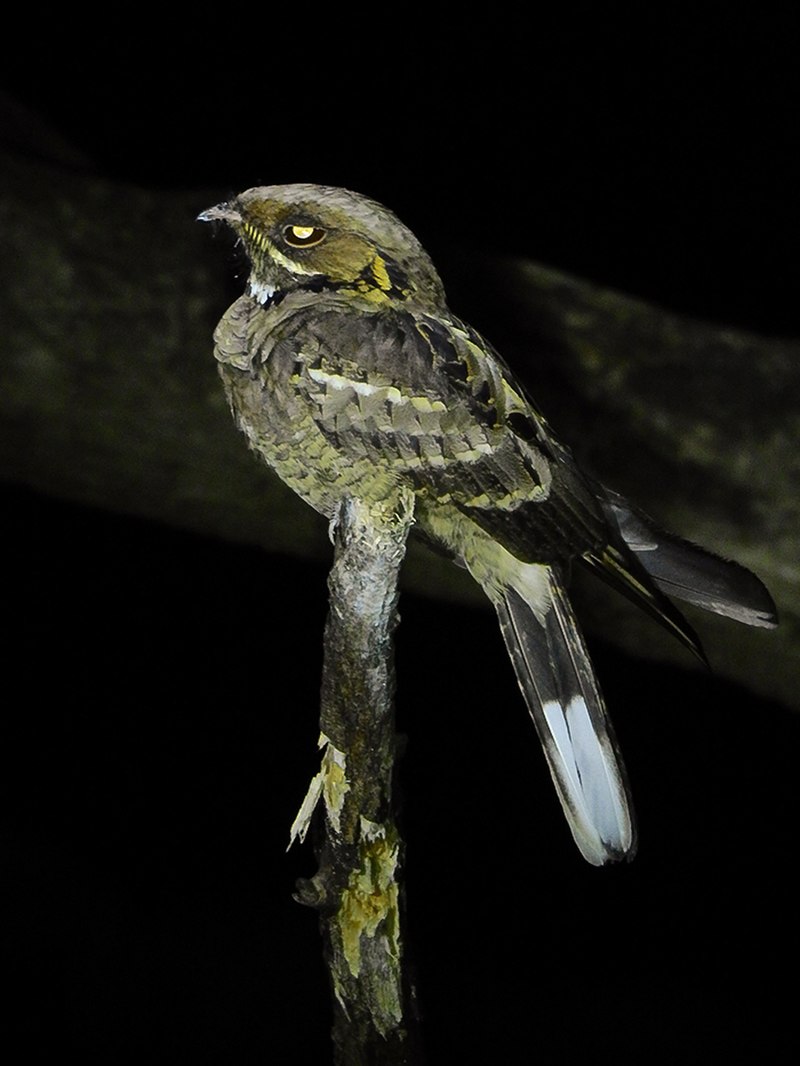
Jerdon’s nightjar is a medium-sized bird found in southern India and Sri Lanka. Its unique call resembles the sound of a wooden plank being beaten at regular intervals, ending in a tremolo.
It was initially considered a sub-species of the long-tailed nightjar but is now recognized as a distinct species. The bird is named after Thomas C. Jerdon, who was the first to describe it.
It has a distinct appearance and is easily recognizable because of its call. Jerdon’s nightjar is a nocturnal bird, making it difficult to spot during the day.
While not much is known about its behavior and habitat, it is an important species in the ecological balance of the region, and conservation efforts are being made to protect it.
Scientific classification:
| Kingdom | Animalia |
| Phylum | Chordata |
| Class | Aves |
| Clade | Strisores |
| Order | Caprimulgiformes |
| Family | Caprimulgidae |
| Genus | Caprimulgus |
| Species | C. atripennis |
26. Savanna Nightjar
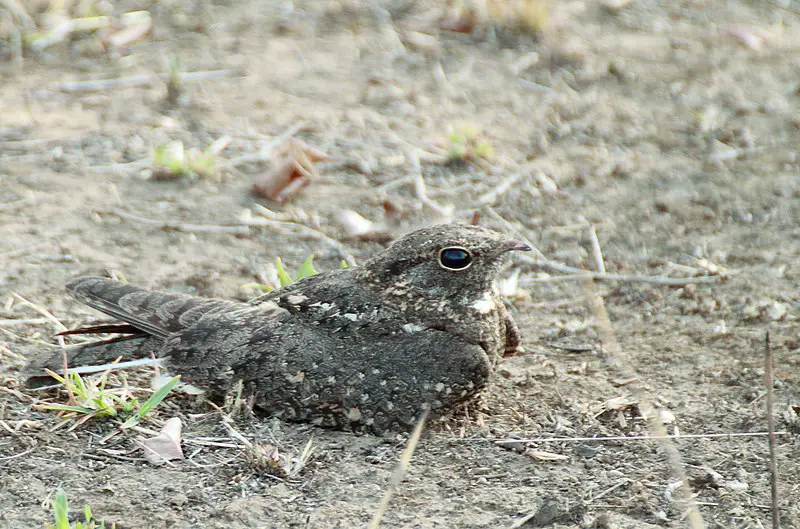
The savanna nightjar, also known as the allied nightjar or Franklin’s nightjar, is a species of bird found in South and Southeast Asia. This nocturnal bird inhabits open forests and scrub areas.
It is known to have eight subspecies, including monticolus, amoyensis, and stictomus. The savanna nightjar is of medium length and has distinct features such as a broad bill and a well-camouflaged plumage.
It is also known for its unique vocalization during the night. This bird’s survival depends on the conservation of its natural habitat, and efforts for this are underway.
Hence, the savanna nightjar is a fascinating and significant species in the avian world.
Scientific classification:
| Kingdom | Animalia |
| Phylum | Chordata |
| Class | Aves |
| Clade | Strisores |
| Order | Caprimulgiformes |
| Family | Caprimulgidae |
| Genus | Caprimulgus |
| Species | C. affinis |
Also Featured In: Most Common Madhya Pradesh Birds,
27. Jungle Nightjar
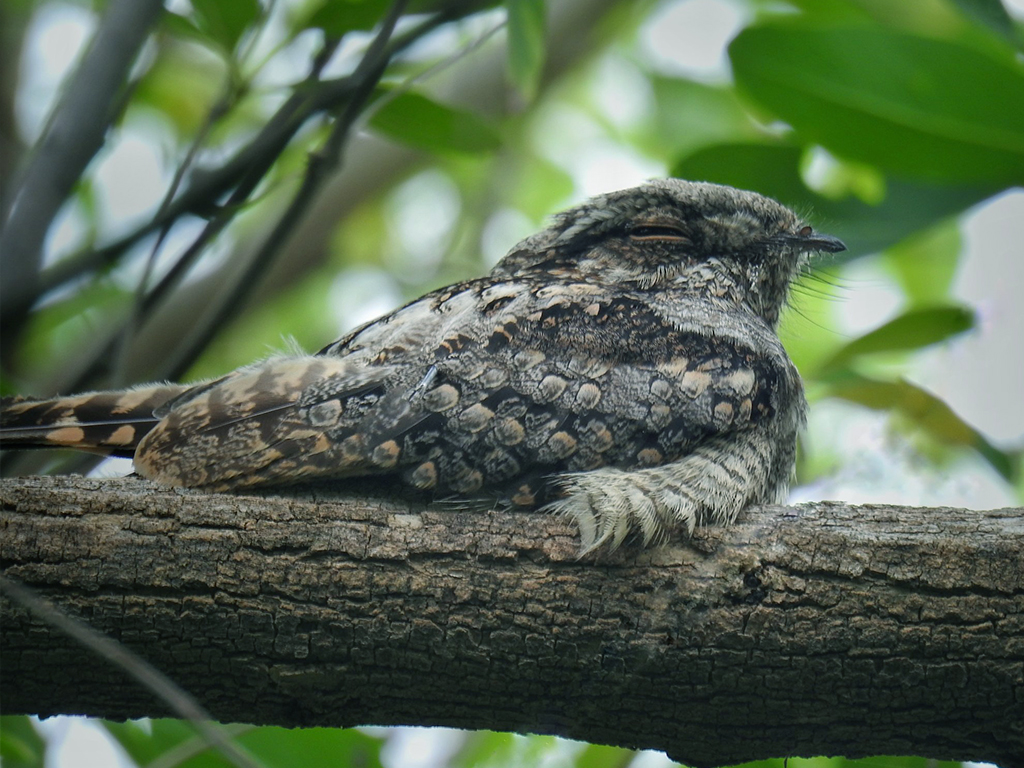
The Jungle nightjar is a bird species found in the Indian subcontinent. This nightjar is commonly observed at twilight on the edge of forests.
The taxonomy of these nightjars is a complex issue and has been the subject of various treatments.
In the past, this bird was referred to as the grey nightjar or Indian jungle.
Scientific classification:
| Kingdom | Animalia |
| Phylum | Chordata |
| Class | Aves |
| Clade | Strisores |
| Order | Caprimulgiformes |
| Family | Caprimulgidae |
| Genus | Caprimulgus |
| Species | C. indicus |